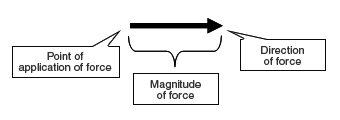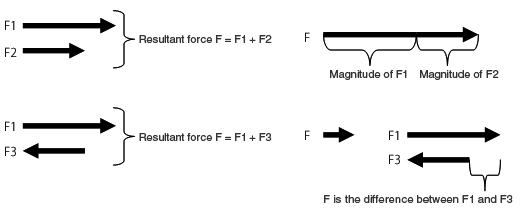#235 Mechanical Engineering and Automation Device Design: Force and Resultant Force
When we design an automation device, it is necessary for us to understand the force, action and moment of the resultant force, as well as the acceleration of the motion and its effects. In this category, we will learn about mechanical engineering and automation device design.
(1)Mechanical devices and mechanics
A mechanical device is comprised of the following components:

The last two units mentioned here are the mechanical components strongly related to static mechanics without involving motion. Understanding forces, resultant forces, or resolution of forces will improve design quality of the mechanical components.

(2)Force and its expression
- When a force is applied to an object, it changes the state of an object from rest to motion or vice-versa.
- When a force is applied, it changes the motion state of an object or causes the object to deform.
- The state of force is expressed by the point of application and the line of action indicating the force direction. The magnitude of force is expressed by the length of the line of action. The arrow indicating all of these elements is called a "vector".

- Symbol N (Newton) indicates the magnitude of force. 1 N is equal to the force needed to accelerate a 1 kg mass at a rate of 1 m/s².
(3)Composition of forces
- In general, multiple forces are applied to a mechanical component. The effect of these forces combined can be expressed as the single force. The combined force here is called a "resultant force".
Resultant force along the same line of action

- Positioning technology
- Designing and processing
- Sensor Technology
- Automation elements technology
- Clean room technology
- Design hints
- Design tips
- Designing and Machining
- Drive mechanism design
- Hints on designing
- Linear Motion Components
- Locating Technology
- Manufacturing technology
- Motion mechanism design
- Pneumatic Drives
- Production Technology
- Technology Outlook
- General description
- Low-cost automation and materials
- Transfer LCA
- #333 Know-how on automation: Pressurized heating technology - 5: Multilayer pressurized heating process technique
- #332 Know-how on automation: Pressurized heating technology - 4: Points to remember when designing mechanism of pneumatic pressurization method
- #331 Know-how on automation: Pressurized heating technology - 3: Pneumatic pressurization method and pressure profile
- #330 Know-how on automation: Pressurized heating technology - 2: Pressurization method and pressure profile
- #329 Know-how on automation: Pressurized heating technology



